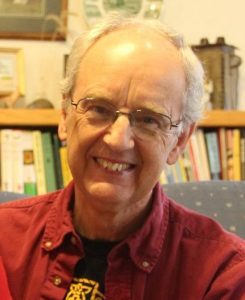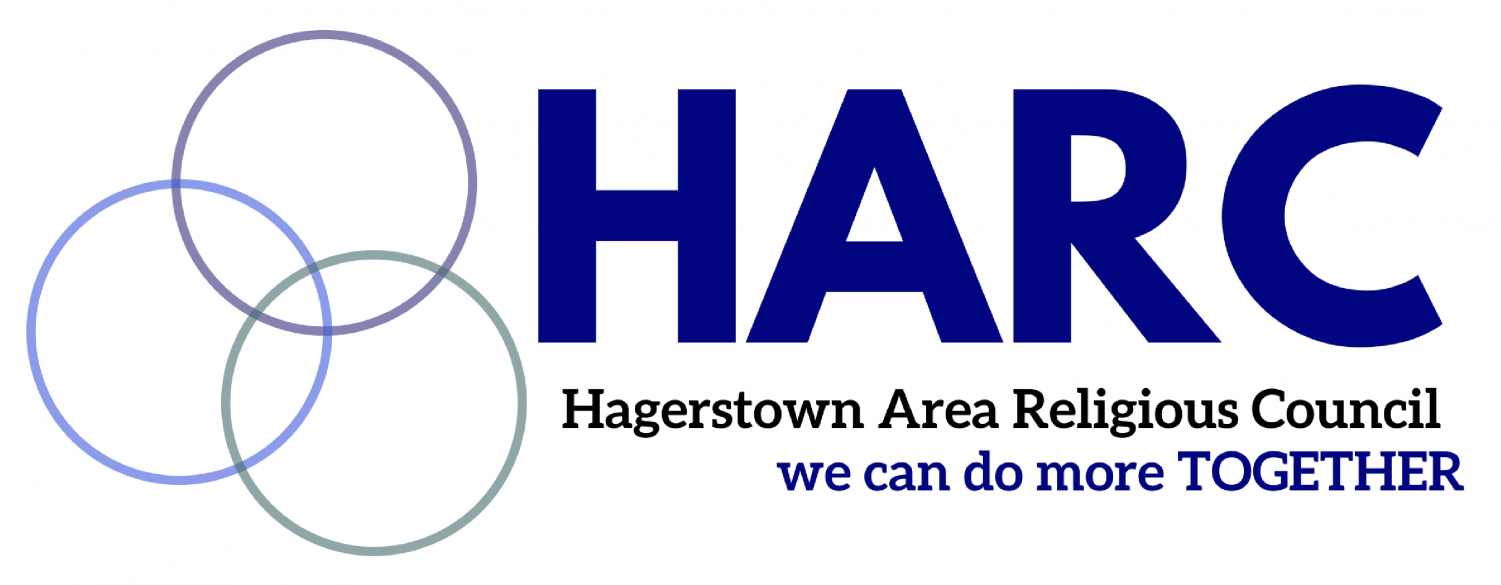 January 11, 2022 Edward Poling
January 11, 2022 Edward Poling
I appreciate the opportunity to share my recollections of the Washington County Council of Churches. I came to Hagerstown in January 2001 as the new pastor of the Hagerstown Church of the Brethren. Most of my memories are of the last 21 years. But I do have a childhood memory to start. I’m not quite a Washington County native. My parents brought me here when I was just a little over a year old. My dad became the pastor of the Brownsville Church of the Brethren in 1948. Brownsville is just about 20 miles south of Hagerstown, almost in the next state. My childhood memory is of hearing him lead vesper services at the Bandshell in the Hagerstown City Park. In the 1950’s at least, the Council of Churches offered services every Sunday evening in the summer, an hour before the Hagerstown Band would present their concert. This was one of the ministries offered back in the early days of the Council.
On coming to Hagerstown, and beginning my ministry, I remember being visited by Bob Hyssong one Sunday morning. He was the Executive Director at the time. After the service he introduced himself and invited me to come to the monthly council meeting.
There was no hesitation in accepting his offer. I have always been interested in meeting clergy in the community where I served. And this was no exception. The fellowship was warm, and I got to know many of the pastors in Hagerstown. The monthly meetings were helpful in learning about the community and its challenges. There were clergy and lay representatives from the various churches as well as folks from the non-profits and governmental organizations. I learned about Habitat for Humanity, REACH, the Washington County Social Services, and others who were reaching out to the community.
One particular person was Betty Willson. She worked as a volunteer for the Council’s Social Help Services, that had its center at Trinity Lutheran Church. This ministry offered physical assistance to neighbors in need. As a downtown pastor, I understood the great need of folks who were living on the edge. And I appreciated the good work that Betty and her volunteers did. This was real ministry.
I was impressed with the Council of Churches, especially its leaders. I want to recall their names, over these last 21 years and the houses of worship they served.
Rev. Don Stevenson – Christ’s Reformed Church
Rev. Ed Heim – St. John’s Lutheran Church
Rev. Jan Dorsey – Hagerstown Church of the Brethren
Rev. Steve Robison – Otterbein United Methodist Church
Rev. Tim Leighton – Church of the Holy Trinity
Rev. Gregg Meserole – Christ’s Reformed Church
Rabbi Ari Plost – Congregation B’nai Abraham
Rev. Elizabeth Jackson – Otterbein United Methodist Church
It wasn’t long until I was involved in the Council of Churches in more than monthly meetings. It was Don Stevenson who challenged the Council to become more than an ecumenical organization. Even before the tragedy of September 11, Don was encouraging the Council to have conversations about the growing interfaith challenge. And that next winter and spring, he started the Interfaith Coalition, calling together clergy and lay people to begin this work. I attended an early meeting and became part of the coalition. We met regularly and planned events that brought a diversity of folks together to find common ground. And over the last twenty years, this group has advocated for tolerance, respect, and appreciation for the many religious and spiritual traditions in our county. I’ve gotten to know and work with folks from the Jewish, Muslim, Buddhist, Hindu, and Bahai traditions as well as non-theists. Hopefully, this advocacy has helped make our community more respectful of people from many faiths and cultures.
Significant for HARC has been a Statement of Peace that was developed to speak to the divisiveness in 2016. Signed by over 400 people in our community, it called for our religious community “to refrain from language that degrades or demonizes another religion, and halt all religious rhetoric that attacks another’s beliefs and practices…” A sign of our growing unity was two public meetings – one at the Islamic Society of Western Maryland after a tragic shooting in a mosque in New Zealand; and the other at Congregation B’nai Abraham after a similar tragedy in a synagogue in Pittsburgh. It was a time to support our faith partners in the midst of fear and uncertainty.
Two other significant ministries of HARC for me are the Good Friday Cross Walk, and the annual HARC Hike.
In 2007 the idea came to hold a Good Friday observance out-of-doors. We took to the streets, inviting folks to join us in a walk through downtown Hagerstown on Good Friday. We stopped at various social service ministries and significant public places to relate our faith to the social justice issues of our day. This became an annual event and continued downtown for the next four years. Then we moved to the Hagerstown City Park and have continued there over the years. During the last two years it has become a virtual event because of COVID. I am especially indebted to Angie Scheerer for writing the liturgy for these services. (We are needing volunteers to organize that effort again this year.)
The Annual HARC Hike started in 2013 when Kathy Powderly became our Executive Director. We wondered how we might provide the funding for this new and exciting venture. That first year, a group of supporters hiked the length of the Catoctin Trail, in Frederick County, some 28 miles, getting financial sponsors. This has continued as a significant fundraising event each year. More recently our group of nearly 100 participants meets at Shepherd’s Springs Outdoor Ministries Center with hikes of various length on the C & O Canal. This past year, we raised a record $24,000. This coming June will be our tenth year. (Kathy notes that The HARC Hike was actually born in 2012 when Ed Poling hiked the entire length of the Appalachian Trail in Maryland – 41 miles – in one day to raise funds for HARC.)
For me, all these experiences with what we now call the Hagerstown Area Religious Council have been rich and rewarding. Not only did it extend through my tenure as one of the local pastors, but also into my retirement. I have been richly blessed. And I believe that the work and ministry of HARC has had a significant positive impact on our community. I regret there are many other programs and offerings now provided by HARC I have not touched on. But, in closing, as Rev. Gregg Meserole used to remind us, “let us continue to engage our faith communities in doing more together than we can alone.”

